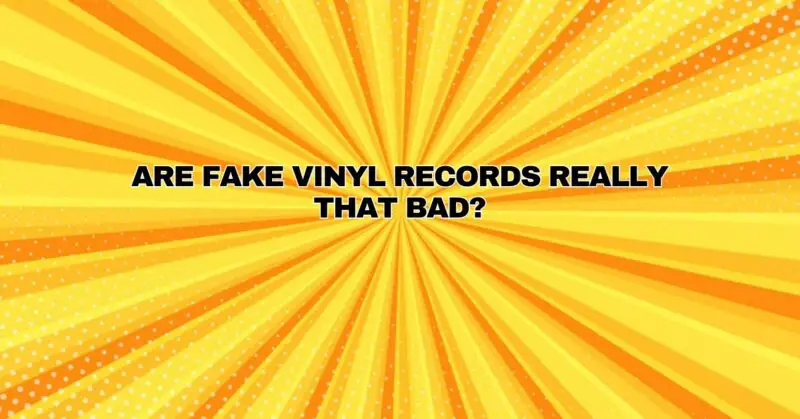The resurgence of vinyl records has brought joy to music enthusiasts and collectors worldwide, but it has also led to the emergence of counterfeit or fake vinyl records in the market. While the allure of vinyl is undeniable, counterfeit records can pose significant risks to both collectors and the music industry. In this comprehensive article, we will explore the implications of fake vinyl records, their impact on the industry, and why discerning between genuine and counterfeit releases is crucial.
Understanding Fake Vinyl Records
Counterfeit vinyl records are unauthorized copies of official releases, often produced without the permission or knowledge of the artists or record labels. These fake records attempt to replicate the appearance of authentic releases but lack the quality and authenticity of genuine vinyl.
The Risks of Fake Vinyl Records
- Sound Quality: One of the primary risks associated with fake vinyl records is compromised sound quality. Counterfeit records are often pressed using subpar materials and manufacturing processes, resulting in poorer audio fidelity, surface noise, and distortion.
- Collectible Value: Vinyl records are not just about sound; they are also cherished as collectibles. Counterfeit records hold little to no collectible value, and collectors who unknowingly purchase fake releases may feel cheated.
- Deceptive Practices: The production and sale of fake records involve deceptive practices that harm consumers and artists. These counterfeiters profit from the hard work of musicians without providing them with the compensation they deserve.
- Market Confusion: The presence of counterfeit records in the market can create confusion for collectors and enthusiasts. It becomes challenging to differentiate between genuine and fake releases, potentially leading to disappointing purchases.
- Undermining Legitimate Sales: Counterfeit vinyl records undermine legitimate sales of artists’ work and contribute to revenue loss for the music industry. This can have a negative impact on artists’ livelihoods and their ability to create new music.
How to Identify Fake Vinyl Records
Detecting fake vinyl records requires careful examination and research:
- Research the Authentic Release: Start by researching the authentic release of the album you are interested in. Check for details like the official release date, catalog number, label logos, and specific packaging features.
- Inspect the Record: Examine the vinyl itself for any signs of poor quality, including surface imperfections, warping, or inconsistencies in thickness. Analyze labels, center rings, and packaging for quality.
- Listen Closely: Pay attention to the sound quality. Counterfeit records often exhibit excessive surface noise, distortion, or a lack of clarity. Compare the audio to known authentic recordings.
- Examine Runout Groove Etchings: Check the matrix numbers and etchings in the runout groove for any discrepancies. Compare them to known authentic releases or consult online databases.
- Beware of Pricing: Be cautious if a vinyl record is being sold at a significantly lower price than its market value, especially if it claims to be rare or collectible. Counterfeiters may use attractive pricing as bait.
- Purchase from Reputable Sources: Whenever possible, buy vinyl records from reputable dealers, record stores, or established online marketplaces with positive feedback and a history of selling authentic merchandise.
Conclusion
While the allure of vinyl records remains strong, the risks associated with counterfeit or fake vinyl records are significant. These fake releases compromise sound quality, deceive collectors, harm artists, create market confusion, and undermine legitimate sales. To preserve the authenticity and value of your vinyl collection, it is crucial to develop the skills and knowledge to discern genuine releases from counterfeits. By doing so, you contribute to the integrity of the music industry and ensure that artists receive the recognition and compensation they deserve for their creative work.


